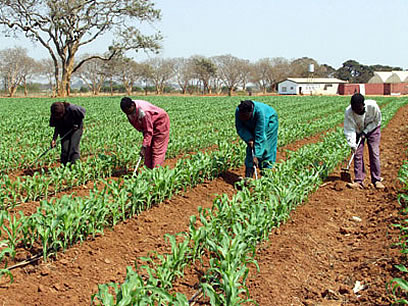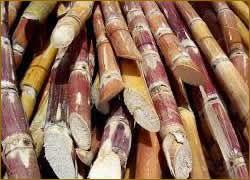
Zambia will be a major global agriculture producer nation by the 2021-2030 periods in sugar, maize, wheat, banana, palm, rice, sorghum, millet, cotton and cassava, pineapple, barley. The country’s well over 740,000 sq mile of land with a relatively small population of under 15 million, provides low/zero ”land-for-development pressure” and its extensive network of perennial rivers and streams with many large static water bodies of natural lakes is well at advantage in global terms and therefore as a destination for agriculture investment.
The Central, Northern and Muchinga provinces will be important locations for large scale eco-friendly commercial agriculture because of the natural and climate-change based rainfall patterns which will minimize the irrigation investments costs.
Global level investors are looking at incorporating African agriculture into their portfolios. Adding agriculture as a strategy for underpinning their traditional investment returns due to significant declines in oil and commodity exposures which continue to impact negatively on returns.
The new dynamics in global populations indicates that Africa will have a population exceeding that of China or India by 2050 and food demand will more than double with a high employable young demographic. Included in the new demand will be the African projections towards middle income status and concomitant food demand.
Political risk evaluated against stability such as prevalent in Zambia provides sound support to large scale investment capital. 51 years since independence, of uninterrupted political stability with 6 regime changes indicates viability of its unique democracy and a national unity of purpose.
The recent substantial strategic investment in high quality road and bridges infrastructure is of great value for the movement of trade goods and will provide the possibility of enhanced efficiencies in transportation of agriculture products for distribution to packaging and consumer markets. Well over 8,000 km of road and bridge infrastructure has been added to the network including substantial improvements to rural road network upgraded and rationalized. Improvements in this communication network and transportation of farm produce will influence sustainable stability in pricing and longer term planning.
Zambia's 2050 and future energy needs will exceed present installed hydro generated energy projections. Eco friendly energy sources of Solar, Wind and bio-mass enhanced by direct coal to energy fired thermal will be the preferred cost-effective alternative.

Goldlink have established a memorandum of understading with the Chiundaponde Community over an area covering 45,000 to 60,000 Hectares of arable land well served with good rainfall, several river streams in the Mpika district. The distribution of high fertility virgin soils is indicated from simple observation. Comprehensive surveys and chemical analysis would follow in the feasibility study upon specifications of focus areas after land demarcation surveys and environmental impact assessment for suitability.
The proposed area, to be divided into 4 major estates each with an out-grower satellite component of 250 small holdings for cultivation of sugar cane, barley, wheat, maize, sorghum and millet and other commercial agriculture/aqua-culture.
1,000 small holder farm units providing a 10,000 hectares in the first phase leading to 2,000 holders on 20,000 hectares at 10th year exit point as the core operation divests the developed fields to concentrate focus on consolidations, factory production, small holder support, distribution and marketing of derived production.
The key suggestions on small holder structure include considerations of
 Goldlink Sugar is strategically positioning its future operations to respond to Africa’s increasing sugar consumption growth, forecast to grow by six million tons by 2020. It also envisions the establishment of major barley, wheat, banana, sorghum, millet estate to meet increasing local and export demands.
Goldlink Sugar is strategically positioning its future operations to respond to Africa’s increasing sugar consumption growth, forecast to grow by six million tons by 2020. It also envisions the establishment of major barley, wheat, banana, sorghum, millet estate to meet increasing local and export demands.
Gold Link Sugar to be a substantial competitor in the supply of sugar, barley, wheat, ethanol and energy to the African industrial and consumer markets.
 Zambia in its current and projected capacities underlined by stability in agriculture policy, availability of a young employable population, local agriculture produce pricing policy as well as export pricing influence based on proximity to regional high demand markets together with a supportive business development environment in its lead investment institutions ZDA, is indicative of a strong potential for outstanding growth. It also is assumable that Zambia has a financial and development gearing to tolerate major investments and of 200 to 300% near term increases in total agriculture production without stress to the systems. This is indicated in the country’s stated desire to effect increase in non-mining activities and release agriculture industrialization. The participation of Zambian owned enterprises increases national net returns in the value of local domiciliation of earnings and deepening local tax contribution resulting in transformative growth of substantial local ownership of the economy.
Zambia in its current and projected capacities underlined by stability in agriculture policy, availability of a young employable population, local agriculture produce pricing policy as well as export pricing influence based on proximity to regional high demand markets together with a supportive business development environment in its lead investment institutions ZDA, is indicative of a strong potential for outstanding growth. It also is assumable that Zambia has a financial and development gearing to tolerate major investments and of 200 to 300% near term increases in total agriculture production without stress to the systems. This is indicated in the country’s stated desire to effect increase in non-mining activities and release agriculture industrialization. The participation of Zambian owned enterprises increases national net returns in the value of local domiciliation of earnings and deepening local tax contribution resulting in transformative growth of substantial local ownership of the economy.
 The majority of downstream production is to be sold into high-value, niche markets. Furfural and its derivatives will be produced while high quality ethyl alcohol, from which various grades of alcohol are made, is produced and distilled. Lactulose is also planned for production. A potable alcohol distillery, will utilize both molasses and energy supplies produced by the factories to make potable alcohol. Production of ethanol will impact positively in future petroleum supply amelioration strategies and policy. Natural non-chemical pesticides and fertilizers are viable for production.
The majority of downstream production is to be sold into high-value, niche markets. Furfural and its derivatives will be produced while high quality ethyl alcohol, from which various grades of alcohol are made, is produced and distilled. Lactulose is also planned for production. A potable alcohol distillery, will utilize both molasses and energy supplies produced by the factories to make potable alcohol. Production of ethanol will impact positively in future petroleum supply amelioration strategies and policy. Natural non-chemical pesticides and fertilizers are viable for production.
Strategic Intent to optimize the return on all of the bio-mass will provide financial flows towards all season viability and ring-fence the out-growers development support, employment levels and constant generation of sound welfare for the communities around the undertakings. . Non-chemical based fertilizer will be produced and used within the farming concern to minimize any impacts on the ecology and integrity of the waters of streams /rivers and water bodies.
Biomass of Dry, fibrous bagasse remaining after the extraction process and biomass left in the fields after harvesting will provide us with a renewable energy fuel source which will be used to produce a substantial part, if not 100% of the operations total energy requirements, reducing impact on the national grid. The objective is to become totally self-sufficient in own power requirements and to export electricity to the national grids under terms of a commercial supply agreement with national electricity supply. Sugar milling operation will be geared to a model which can supply a reliable renewable energy source. In addition solar energy production is indicated and will support the irrigation and needs of the general area’s communities at Mpika and outlying areas of the district.
A 50- 75 megawatts of electricity installations are projected. Newest advanced co-generation technology plants will be acquired to facilitate potentials of 250 to 300 kWh of electricity per tonne bagasse. This power will be generated from both bio-mass fed and solar farm to provide energy for mill plants, irrigation and lighting which will be shared with surrounding community and districts.